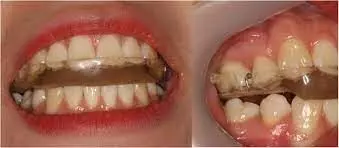Menopause linked to mandibular condylar trabecular bone loss affecting periodontal, orthodontic, and implant placement in elderly females: Study

Menopause linked to mandibular condylar trabecular bone loss affecting periodontal, orthodontic, and implant placement in elderly females suggests a study published in the Journal of Oral and Maxillofacial Surgery.
There are conflicting reports on the effects of decreased estrogen levels on mandibular bone microarchitecture. Whether these effects are consistent throughout the mandible is unclear and may have important implications for treatment planning. The goal of this study was to evaluate trabecular and cortical bone microstructure in the mandibular condyle and the mandibular basal bone and compare these sites between premenopausal and postmenopausal women. Participants were recruited for a cross-sectional cohort study at Columbia University Irving Medical Center. Each participant had cone-beam computed tomography taken of their mandibular condyles and the basal bone. Exclusion criteria for the population included a) current chemotherapy or immunotherapy; b) history of bisphosphonate or other osteoporosis therapy; and c) currently pregnant, nursing, or on hormonal birth control. Results: The premenopausal and postmenopausal groups each had 31 participants, with the following average age: premenopausal = 43.9 ± 6.9 versus postmenopausal = 57.5 ± 7.6 years old; P < .001, and estrogen levels: premenopausal = 91.77 ± 80.13 pg/ml versus postmenopausal = 41.44 ± 61.62 pg/ml; P < .01). Postmenopausal women had significantly greater condylar trabecular separation (0.61 ± 0.18 vs 0.47 ± 0.11 mm; P < .001) and lower trabecular number (1.03 ± 0.18 vs 1.21 ± 0.19 mm−1; P < .001) compared to premenopausal women. There were no significant differences in the basal bone microarchitectural parameters between the menopausal groups. Menopause is associated with mandibular condylar trabecular bone loss but has minimal effects on the mandibular basal bone. This may have important ramifications for treatment planning in advanced-age individuals.
Reference:
Levit M, Finn T, Sachadava S, Matsumura S, Shah J, Cantos A, Yin MT, Wadhwa S. Menopause-Associated Changes in Mandibular Bone Microarchitecture Are Site-Specific. J Oral Maxillofac Surg. 2024 Apr;82(4):485-493. doi: 10.1016/j.joms.2024.01.015. Epub 2024 Feb 1. PMID: 38341183; PMCID: PMC11010363.
Keywords:
Menopause, mandibular, condylar, trabecular bone loss, affecting, periodontal, orthodontic, implant placement, elderly females, study, Journal of Oral and Maxillofacial Surgery, Levit M, Finn T, Sachadava S, Matsumura S, Shah J, Cantos A, Yin MT, Wadhwa S



